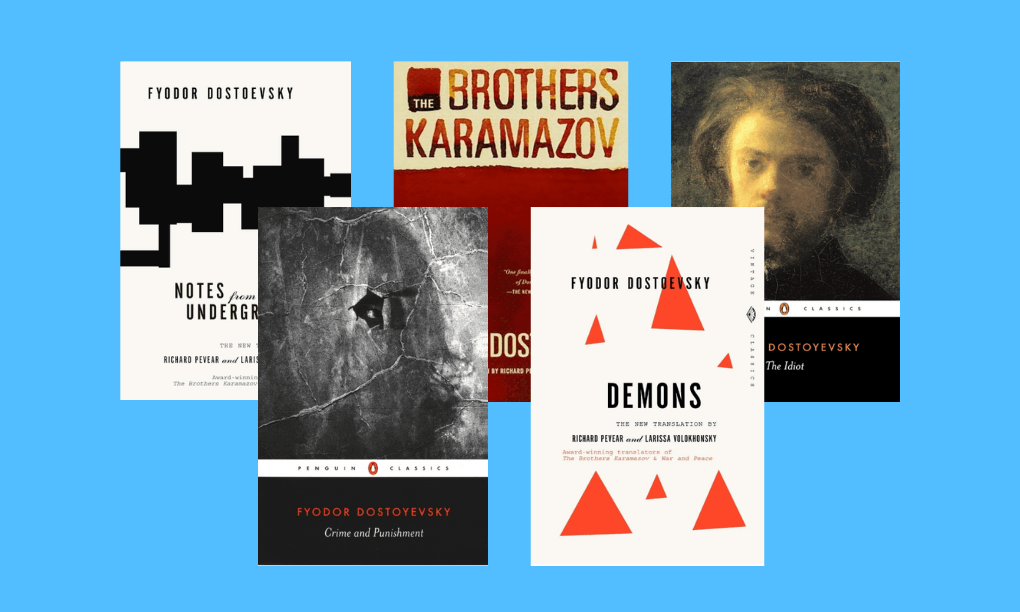Tim Ferriss is a renowned self-help and self-improvement guru who has crafted his personal life and achieved enormous success in business ventures in various domains. He has risen to fame after writing The 4-hour Week and sending a message across all of America that it is possible to stay fit, become rich, and retire early if you plan this!
His desire to surpass his capabilities, not to accept physical and mental limitations, and always reach for better results have inspired millions of people who listen to his podcasts, follow him on social media, and read his best-selling books. Also, Tim Ferris gathered a large audience in front of the television screens with his show The Tim Ferriss Experiment which featured how the host attempts to master a new field every week (rally car driving, speaking Tagalong, drumming, etc.). In the beginning, Tim made only 13 episodes together with Turner Broadcasting before he got the digital rights for the show and put it on iTunes, where it became a real hit and topped the nonfiction series charts for weeks. Later he decided to shoot the television adaptation of his popular podcast—TV show Fear(less) which proved to be an enormous success as well.
Tim’s Personal Story
Tim Ferriss grew up in East Hampton, which is an affluent oceanside area of Long Island packed with beautiful cottages with shingled roofs and surrounded by accurate hedges. Tim’s family did not belong to this society and were rather called “townies”: his father worked as a real estate agent, and his mother—as a physical therapist. From Tim’s early memories, he recounts:
“I was a very happy kid. I didn’t get new bikes very often. We ate a lot of chicken legs for dinner. But I never felt in want of anything. I wasn’t cognizant until much later of the discrepancy between what we had and what other people had.”—Tim Ferriss
At the same time, he recounts that the kids at school used to bully him a lot due to his short stature. The fact that he constantly had sinusitis and allergies didn’t make the state of affairs any better. In the 5th grade, a pair of bullies slapped him strongly on his sunburn back and wished him to have a good summer—it was very painful, and he tried to hold his grief as best as he could, but as soon as they left, he burst into tears. It was a difficult time for young Ferriss, but his teacher Mrs. Talmage would always tell him not to worry—she strongly believed that he would show everyone what he could achieve! And within a few months after this unpleasant incident, Mrs. Talmage’s prediction came true: Tim went on to spend his summer at sleepaway camp, grew up five inches, and gained 60 pounds of muscle. He came back enormous and was no longer short—no one in the class could believe that it was the same guy that used to get beaten up quite often. Now it was Tim’s turn to throw his bullies over the desk and smash their heads into the floor! It has been a tough journey, but Tim has turned up to be a winner in this battle with life: with time, he mastered how to navigate danger and power dynamics to win complex rounds!
The next step for young Tim towards building up his resilient nature was to take up wrestling—this sport, more than anything, has shaped Tim Ferriss’ approach to life and work as we know it today; it became the base for his future success and fame. One of the most ancient sports, amateur wrestling, requires a combination of strength and strategy, and wrestlers have to apply courage and grit if they would like to come out as winners. According to Tim, he won fighting not because of his technical abilities but due to his smart training—if you practice better than the other guy, you will be able to beat him. He understood early on that discomfort often means that you are on the right track to getting better and stronger! Tim started to apply this idea to other spheres of his life and very soon started to notice visible results.

“The more you sweat in training, the less you bleed in battle.'”—Tim Ferriss
That is why when he began working as a cleaner at an ice cream parlor and later bussed tables at a well-known seafood shack, the Lobster Roll, Tim Ferriss saw it as an opportunity rather than as humiliation. When he got a job at the Maidstone Arms hotel, he had to wear a uniform—a clip-on bow tie and a pink shirt—which was the only collared shirt he owned at that time. Despite serving celebrities their drinks and earning a $20 tip from Billy Joel, most of the time, these people would treat him as though he was at the bottom of the caste system. This experience instilled in Tim a distaste for city people, and he grew up with a lot of venom against the social class system.
Now that Tim Ferriss graduated from Princeton and has become a best-selling author, a lifestyle guru to tech millionaires, and a successful investor in his own right, he can easily count himself as one of those one-percenters that he used to dislike when he was growing up. In his own words, even today, he doesn’t know to which of the two worlds he belongs. When he was in the process of writing his book Tools of Titans, he came back to Maidstone Arms—and he was careful to leave an extremely generous tip.
Growing up looking at the habits of rich people with his face pressed against the glass made Tim overvalue money in his early days. Like many others in this world, he thought that when you have money, you are happy automatically. Looking at how others could afford what he was only dreaming about, he developed an intense drive to achieve success. After having a lucky streak for several consequent years, he had to admit to himself that the amount of money has nothing to do with real happiness. After becoming famous, he met so many millionaires who would just moan about someone else’s bigger yachts and planes. What a waste of life!
These people were not happy—and they had probably 100 thousand times more money than a regular person can have in his lifetime!
This reminded Tim how easy it could be to lose everything! In his last year at Stanford, Tim had problems with his thesis, which was not coming along, he was also rejected for a second interview at McKinsey, and his long-time girlfriend broke up with him—all this drove him to the edge, and he decided to take a year off. Despite his expectations to undergo some sort of healing, his anxiety and depression only multiplied due to the disconnection from school—so he would start contemplating suicide seriously. He would bring this serious topic to the table publicly in a 2015 Reddit Ask me Anything. It was just luck that he did not erase himself—since he approached this idea in a very substantial way and researched the pros and cons of different methods of ending his life. He ordered books on suicide from the Princeton library and requested the notification mail to be sent to his parents’ address during his leave. So once the library’s notice was sent to his mother, she immediately called him in panic, which saved his life. His mother’s voice took him out of the self-absorbed bubble, and he started to battle his demons—he accepted life’s ups and downs and appreciated everything that he had and was able to achieve at that point. After such a low point in his life, Tim Ferriss was able to accomplish the equivalent of five weeks’ tasks in five days! He knew that he had paid his price to have these ideas!
The Guru of Personal Success

After these events, Tim Ferriss found the meaning of his life in physical activity. Together with his friend from wrestling days, Tim signed up for the Chinese national kickboxing competition. He was training every day in a gym in Trenton—which was rough at that time since most of the people there were on work release. After he got his head smashed a couple of times, he finally got accepted into their circle. He applied his analytical mindset to understand the rules of this sport: like the one when fights had to take place on an elevated mat and the one who got pushed/knocked off more than three times was the one who automatically forfeited the match. Tim Ferriss turned this point into the base for his strategy to push his opponent off the platform. He would concentrate on perfecting his push kicks instead of more common roundhouse kicks. He decided to focus on his strengths and cover his weaknesses enough not to get knocked out—and his strategy proved to be working! He won the national title, regained his confidence, and learned how to use a physical goal to keep the rest of his life on track! He designed his system of frequent training, which would act as a scaffolding system on top of which he could hang everything else—he regained control over his life. Another benefit of combat sports is tolerating high stakes: Tim Ferriss learned how to manage fear—it does not mean he no longer has it, but it does not subdue you. In kickboxing, physical injury is inevitable since it is the consequence of participating in the battle. You learn to take action despite the fear of getting hit; it is a very useful approach that can apply to everything you do later in your life.
Soon after graduation, Ferriss ended up in a sales job at a data storage company which he did not like. He decided to start his business venture and started to ask himself what does he know himself well enough to offer his services to the people? He realized very soon that his expertise was in the supplements industry: back in his neuroscience days in college, Ferriss used to make smart drugs in his dorm bathroom. He found out that after a diuretic nasal spray, he could happily “cram for his Chinese-character quizzes.”
After figuring out the industry where he would like to concentrate his efforts, Tim Ferriss asked himself what things he could not avoid living with and which were price-insensitive for him. Again, it was obvious: sports supplements when he used to spend around $500 a month with a pre-tax salary of $40,000 in the Bay Area. The last question that Tim Ferriss asked himself was: what can he market effectively to his customers?
Since his early days, Tim has always been interested in marketing. He would listen to late-night infomercials, always trying to find out what navigates people’s decisions. He would read scripts, take notes, and place orders to see what product will arrive and then return it for a refund. He even kept track of it as that had worked on him. These insights helped our main character to launch his company—BrainQuicken, which he launched in 2000. Sales were going slow, but he noticed that people who had bought his products started to appreciate the physical results they derived from these products—even though, originally, the products were designed to enhance people’s minds. Tim Ferriss thought people wanted to be smarter—and they do; that is why they are ready to pay $50 for the supplement. He kept the same formula but branded the product as BodyQuick and targeted athletes—no wonder, very soon, Tim Ferriss had a hit.
The 4-Hour Workweek
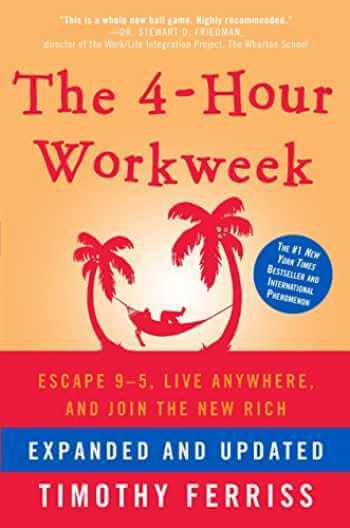
“Adapt what is useful, reject what is useless, and add what is specifically your own.”—Bruce Lee
The 4-Hour Workweek was published in 2007 and collected 26 rejections before it found its way to bookshelves. Later the book sold more than 1.3 million copies and was translated into 35 languages. Also, this top business book has spent more than four years in a row on the New York Times bestseller list. This top business book will become a bible for those who are looking to find a way to make more money with less time: the idea is to create an automated vehicle for “generating cash without consuming time.” It is about concentrating on the 20% that drives most of the results and automating everything possible as well as outsourcing the other 80% of work that you have to do. In such a way, you will have time to make your life exciting!
This book breaks the traditional concept of working till 65 to retire to live the life of your dreams. Tim Ferriss explains that there is no reason to wait for your retirement—taking into account unpredictable economic times, you will struggle to foresee what you will be able to afford in 30 years’ time. Read this top business book to find out how to achieve the stage when you can do high-end world travel, earn a monthly five-figure income and escape the never-ending tasks—this blueprint is for you!
This is a how-to guide from Tim Ferriss about:
- Steps you need to undertake to go from $40,000 per year with 80 hours per week to $40,000 per month and 4 hours per week
- Strategy for outsourcing life to overseas virtual assistants for $5 per hour and having more free time for yourself.
- How artists travel the world without quitting their jobs
- How you can settle for a succession of short work bursts and “mini-retirements”—instead of a long-haul career
You will find how to negotiate with boss and clients, how to get a private chef for less than $8 a meal, you fill out about Tim Ferriss’ lifestyle design principles for different economic times, as well as his latest tools and tricks for living like a diplomat and millionaire without being one.
The interesting notions brought up by Tim Ferriss:
- Mini-retirement: this concept resembles the idea brought up by Nassim Taleb with his serial barbell strategy, in which he talks about alternating between periods of stable work and risky ventures. Rather than spending all your best years in the pursuit of wealth, why not just decide how precisely you would like to live your life—and start making your dreams come true and, in between—come up with very intense working periods to be able to pay for what you want to do.
- Low-information diet: there is a constant stream of news, social media posts, and other information, and we tend to overvalue the importance and urgency of this information pouring into us. In reality, it is important to learn to synthesize the events and to make sure that you do not waste your mental energy and time on things that you cannot control.
- Geoarbitrage: this part is about finding a way to balance your money streams—keeping income high and expenses low. Tim Ferriss advises earning money in US dollars and spending them in pesos or baht—this way, it is possible to save up more money than you would at home, will have an opportunity to live a crazy opulent lifestyle and avoid extremely hard work.
- Passive income: it is about making money when you sleep. In order to achieve this level, it is certain that you will have to do a certain amount of work at some point. If you look at Ferriss himself, he puts out an impressive amount of work (written and in the form of podcast interviews), and it is obvious that it took N number of years to arrive at the stage where he is now—you can do the same! At the same, do not expect to set up a website on Monday and start making real money from it on Monday of the same week!
- Productivity: Tim Ferriss’ productivity strategies let him stay on top of numerous business, sports, and personal accomplishments. He uses the following laws to enhance his efficiency:
- Pareto Principle: it is the famous rule that 20% of inputs in terms of sourcing customers, employees, and spent time account for 80% of the outputs (results, sales, and productivity). Your task is to find which 20 percent of the tasks you have to do account for the most results and focus on them.
- Parkinson’s Law: the more you allot time for tasks, the more important they are for you. Tight deadlines will help you to focus on the 20 percent of tasks that really matter.
- Batching: aim to do all the boring stuff at once rather than distracting you throughout the day. You want to avoid constantly switching tasks which will mentally pressure you.
This is one of the best Tim Ferriss’ business books, and we strongly advise you to read it!
The 4-Hour Body
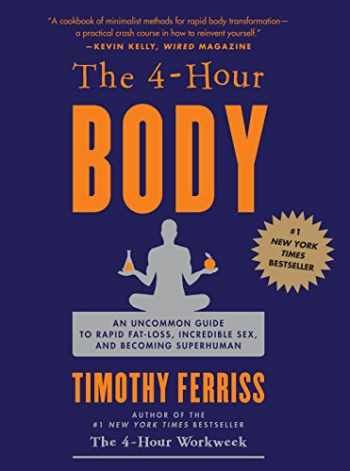
“The decent method you follow is better than the perfect method you quit.“—Tim Ferriss
Everyone has been anticipating this book—The 4-Hour Body—just have a look at Tim Ferriss! He is the best example of the effects of the Slow-Carb diet that he has been popularizing over the past years! It is not surprising Tim came up with an idea to share postulates and ideas from his podcast in this top fitness book on healthy lifestyle and healthy eating! If you have been wondering how to become thinner, live faster, feel stronger, and lift bigger weights—well, this transformational book by Tim Ferriss has all the answers for you! Laid out on 150 pages, these how-to insights will open a new reality for you :
- How to reach your genetic potential in 6 months
- How to sleep only 2 hours per night and perform better than in you slept 8 hours
- How to lose more fat by eating a lot rather than running marathons
- How to prevent fat gain during festive eating (Xmas, weekends, holidays)
- How to increase your fat loss by 300% with a few bags of ice
- How to gain 34 pounds of muscle in just one month’s time—without steroids (and in 4 hours of total gym time)
- How to go from running 5 km to 50 km in 12 weeks’ time
- How to reverse “permanent” injuries
- How to add 150+ pounds to your lifts in 6 months
- How to pay for a beach vacation in one hospital visit
As is always the case with Tim Ferriss’ books, it is not a simple diet and fitness book. It is a detailed research on human body performance based on Tim’s personal training and his experience with neuroscience when he was a student at Stanford. In this obsessive quest to hack the secrets of the human body: the author analyzed the performance of hundreds of elite athletes and used thousands of hours of his personal experimentation. This thought synthesis led Tim to become the #1 New York Times bestselling author. This top book on sport performance will find the answers to questions for both women and men. What are the tiniest changes in your regimen to produce the biggest results? You do not need better genetics or more discipline—you just need immediate results to encourage you to continue with your training and regimen. This is what The 4-Hour Body is designed to do for you.
The 4-Hour Chef
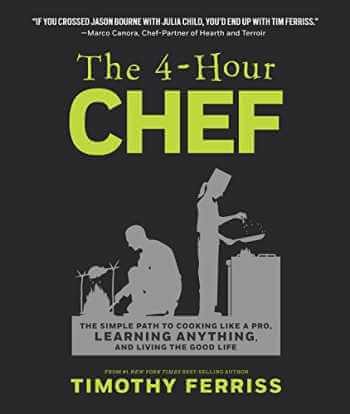
“In cooking—as in business and war—hope for the best but plan for the worst.”—Tim Ferriss
The 4-Hour Chef is another bestseller book by Tim Ferriss that is focused on teaching how to cook in a very short period of time. After having massive success with his New York bestseller-listed book The 4-Hour Work Week, the author decided that you should learn how to eat well at a fraction of the price and without spending hours in the kitchen. This is one of the best books on time management that does not give you typical advice on keeping priority lists and keeping better focus. This is the how-to guide to quickly master new languages, practice sports and take dance lessons. It is a cookbook of rapid learning full of interesting adventures and unusual lifehacks that Tim implements in his own life!
The name of the book is derived from the idea that it will take only 4 hours to cook 14 key meals. Moreover, the author suggests that you can fit the equivalent of 6 months of chef school in just 48 hours slot. These 48 hours refer to the time which Tim Ferriss spent with a chef at a culinary boot camp. We can learn the same amount of information with the help of Tim Ferriss’ book in a similar time frame. Moreover, The 4-Hour Chef was one of the first books to be printed by Amazon which is already an indication of the quality content. Such intense interest from the biggest e-commerce company in the world led to the boycott of many of the US booksellers including Barnes and Noble—they were not happy about the exclusive rights that Amazon negotiated for certain e-books. That is why Tim Ferriss referred to his book as “poised to be the most banned book in US history.”
Since Tim Ferriss used to study neuroscience at Princeton, it is not surprising that the first 100 pages of his book are dedicated to “meta-learning”—the method which helps to retain massive amounts of information with astonishing speed. This is the approach that has let the author master kickboxing and learn Japanese.
The actual cooking part is split into the following parts:
- The Domestic: this is the best part devoted to cooking simple, tasty food (braised lamb with carrots, for example)
- Sexy-Time Steak
- The Professional: if you love haute cuisine, you will appreciate this part for sure!
- The Scientist
At the end, there is some info on how to become a restaurant VIP (which, according to Tim, is very handy) and how to memorise a pack of cards in less than a minute (43 seconds, to be exact). What else can you wish from a cookery book?

Tim Ferriss himself is a follower of a rigorous Slow-Carb diet and this means that he does not consume carbohydrates (even the healthy ones like bread, grains and rice). No need to say that potatoes and sugar are not part of his daily intake either! Therefore, even if it is a cookery book, you will not be able to find any recipes for apple crumble pies and banana bread there! Only two biscuit recipes are available (for “Saturday” treatment, i.e., when Ferriss and his followers let themselves lapse from their diet plan). Rather than giving advice on how to cook a pan of spaghetti, readers will learn about poaching salmon in a bathroom sink under 50°C tap water and how to prepare olive oil gummy bears.
Therefore, this cookbook will probably wow the male public more—it’s masculine in tone, with pages on guns and hunting knives and descriptions of competitive earning. The recipes have the boy ambiance: if we look at the author’s potato dishes, we will see that three of these recipes are about fries, and the 4th one is about faux truffle slices, aka potato and mushroom balls.
Tools of Titans
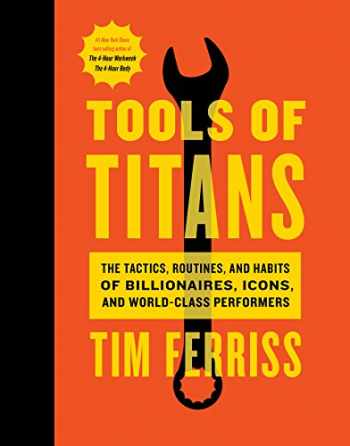
Tools of Titans book began as a personal project in an attempt to catalogue hundreds of Ferriss’ famous podcasts. The author did not want to waste the wisdom of his guests, who achieved compelling success in their professional and personal lives. More than 200 podcasts were featured in this top motivational book with only start guests starting from Jamie Foxx to General Stanley McChrystal.
At the time of the creation of the book, Tim was living in Paris and went to take a class in fiction writing. This experience allowed him to quickly appreciate the quality of those mp3s that he had recorded! He thought it would be an easy task to draft this book since all the information was already at hands. But it would not be Tim Ferriss, if he did not start studying the market: he purchased 6–12 most successful books in the interview genre and quickly concluded that they were boring and lacked action! He was determined to publish something authentic which was driven by results—and buried himself once again in his transcripts. He conducted additional interviews to fill the gaps and wrote a number of original chapters himself. He wanted to process some of the information into a user-friendly format, ensuring readers will not get lost among the advice in this 700 pages book. For instance, in the chapter in writing, Seth Rogen and Evan Goldberg advise to “write what you know“—the concept completely denounced 50 pages later by Steven Dubner, the author of the popular book Freakonomics. It is not surprising that the points of view of these writers don’t match: Dubner used to work as a professional journalist, and Roger used to make Hollywood blockbusters. But how should a reader decide which peach of advice to follow?
“It’s only good advice if it lends itself to a good experiment. And a good experiment is measurable and rep” able.”—Tim Ferriss
Tim Ferriss suggests that every idea in this book should be subjected to rigorous testing. For example, we hear and get told everywhere that we should do exercises every morning. It might be a good intention, but it is hard to navigate with this nebulous advice: what exercises? How many repetitions? How do you need to do them? That is why someone attempting to follow this advice is most likely doomed from the start: it is like taking a step in the dark. Unfortunately, this kind of advice is not rare in popular business books that we see on bookstore shelves. 90% of the business book content does not contain good advice: because it’s only reasonable when you can test it! Such a methodical approach of Tim to his work won him thousands of devotees who downloaded his podcast more than 100 million times! Tim Ferriss always backs up his arguments with real data—which is rather unusual for the podcasting industry that is rife with assumptions.
Therefore, if you have been looking for “field-tested beliefs and habits” that will lead you to success, this top motivational book by Tim Ferriss—New York Times bestselling author—is a must-have toolkit for you to start improving your life immediately! Remember, however, that this book shouldn’t be referred to as the bible of advice: Tim Ferriss achieved guru status by leading a life of trial and error—and he suggests you should start doing the same!
Tim Ferriss’ Advice

In all the books written by the renowned author Tim Ferriss, you will meet the recurring idea that if you are ambitious and desire success, you would not like to settle for any kind of job. You would rather do something that is meaningful, something that makes you feel fulfilled and happy. The author applies this idea to the domain of literature and professional writers: there are writers who became worldwide famous just with one book—for example, Harper Lee with her book To Kill a Mockingbird. She is one of the best-selling American authors, but Tim is wondering what she was doing with all her free time after she had written that single bestseller book. At the same time, there are writers like Stephen King who write every day because they cannot live without his work.
In his books and podcasts, Tim Ferriss refers to an interesting TED Talk by Richard S. John, 8 Secrets of Success, where the speaker contemplates the elements of success after having interviewed 500 successful people. According to St. John, there are eight factors that you need to become successful at what you do:
- Passion
- Work
- Expertise: Master your own skills.
- Focus: Practice it every day.
- Push: Overcome doubt and inhibitions.
- Serve: Make sure you offer people something of value—this is one of the most important reasons why you get rich.
- Ideas: Follow them and be creative!
- Persistence: It is the number one reason why you become successful. You have to continue to make efforts despite failures and criticism, rejection, and pressure.
When you become a pro at what you do and develop your personality, it will take you less time to find customers and offer them what they need!

